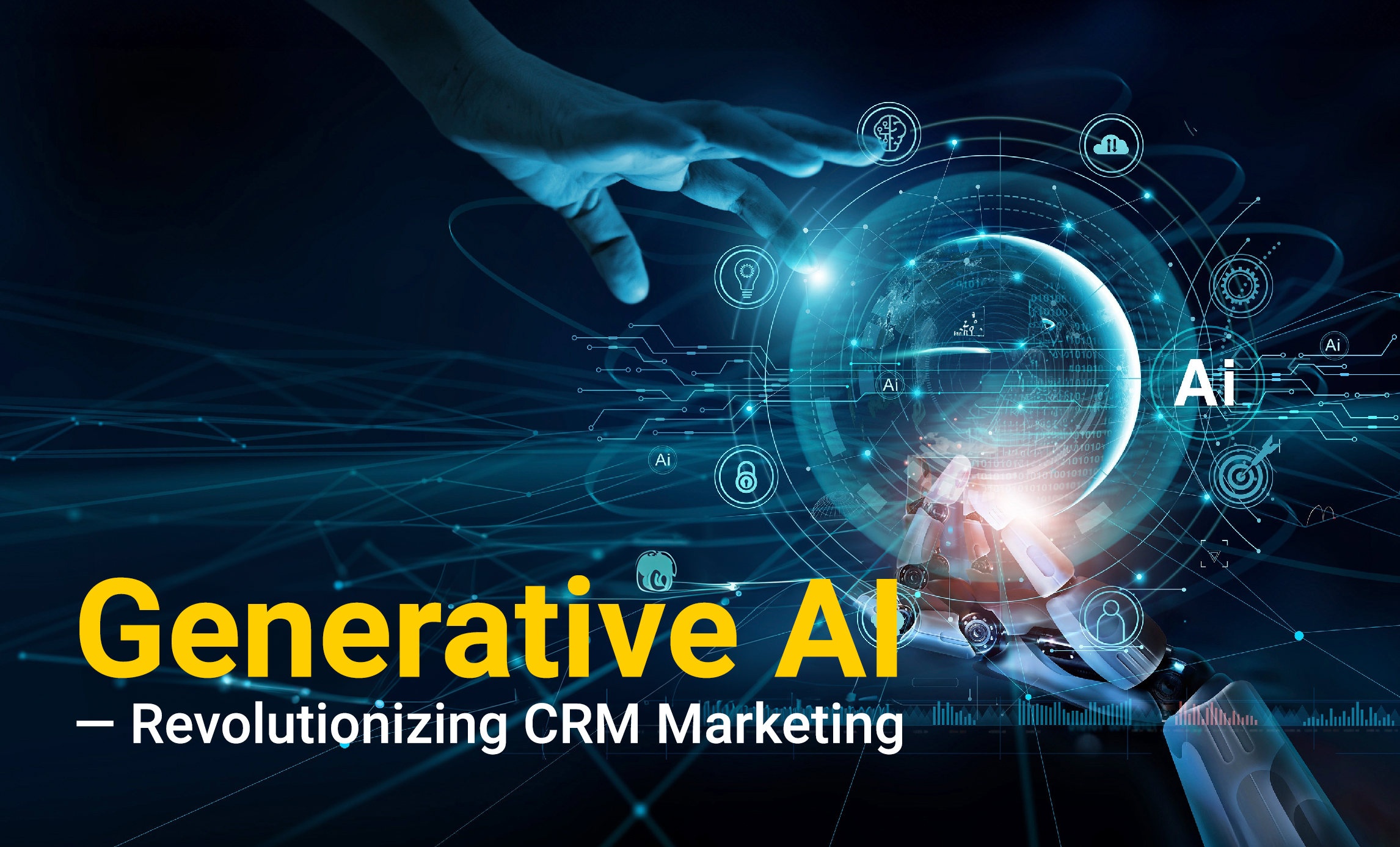Marketers have long recognised the power of hyper-personalisation and the need for rapid experimental velocity to drive marketing KPIs. However, executing these strategies reliably and consistently has always been a challenge. While the technological toolkit has been available for years through enterprise-grade automation platforms, it’s the human capital element that has made achieving these goals nearly impossible. Who has the bandwidth to ideate 100 different experiments a week or create endless variations of creative content that might only resonate with a single customer?
Generative AI is now liberating marketers from these constraints.
By coupling Generative AI with marketing automation, leading enterprises are realising the full potential of hyper-personalisation and scaling experimentation. The question is no longer whether these capabilities exist, but whether you are fully leveraging them—or leaving significant marketing revenue opportunities untapped.
Let’s explore how Gen AI and marketing automation are enabling enterprises to execute hyper-personalisation and achieve experimental velocity at scale.
Beyond Brainstorming
Despite having access to vast amounts of data, many organisations still rely on outdated ideation methods like traditional brainstorming. Teams gather in a room, armed with sticky notes, throwing ideas at a board. From there, they prioritise based on gut instinct or heuristic models, followed by a “test and learn” approach, hoping that some of the ideas will deliver results. This is akin to throwing pizza at the wall and waiting to see what sticks.
There is a more effective way to approach ideation and experimentation: structured frameworks. By fencing in your experimentation scope, you create themes to guide your tests, such as psychological tones, brand propositions, or campaign types. For example, which psychological triggers resonate more with a particular customer—loss aversion (FOMO) or aspiration? What brand value proposition appeals more—selection vs. quality, value, or convenience? Similarly, which campaign types perform best—educational “how-to” messages or promotional content, benefit explanations or catalogues?
By structuring your ideation around clear themes, you overcome the dreaded blank sheet syndrome, and the creative process becomes far more streamlined. Although this method may seem less free-form than traditional brainstorming, it drives efficiency. Structured frameworks not only accelerate ideation but also significantly increase the likelihood of higher returns on your marketing experiments.
Unlocking Precision: One-to-One Experimentation with AI
One of the most powerful advantages of Generative AI is its ability to overcome the limitations in delivering creative assets. Experimentation has always been constrained by the amount of human bandwidth required to produce these assets. As a result, most experimentation is carried out at the campaign level, rather than truly personalising down to the one-to-one level.
One of the key drawbacks of campaign-level testing is that it suffers from the “tyranny of the majority.” For example, let’s say we run a simple A/B (or even a multivariate) test between a green “Buy Now” CTA button and a red one. The green button wins by a landslide, outperforming the red by 10x. So, we optimise all campaigns by switching to the green CTA. But what if I, as an individual, actually prefer the red CTA? What if I’m not part of the majority? As a result, I may now be less inclined to click the green button. Campaign-level testing treats everyone the same, failing to capture individual preferences. Isn’t it time to fully leverage the capabilities of our marketing automation platforms to enable one-to-one testing—where everyone gets the CTA colour they respond best to?
By moving to one-to-one experimentation, we achieve far greater levels of precision and personalisation, leading to improved outcomes.
Now, let’s move beyond our simple green vs. red button scenario and revisit the concept of experimentation themes. In real-world interactions, there are countless ways to have the same conversation, but the approach you take depends on the person you’re speaking to. The way I talk to my best friend is very different from how I speak to my grandfather.
Generative AI revolutionises this dynamic by allowing marketers to generate creative outputs on a massive scale, focusing on high-value elements like tonality and value propositions in copy and imagery. Combined with marketing automation, AI enables us to deliver personalised campaign formats—whether it’s “how-to” guides, catalogues, or promotional offers—to each individual in our audience. This allows us to personalise not just at the campaign level, but at the one-to-one level, and experiment with unprecedented precision.
Moving Beyond Champion-Challenger: Embracing Cumulative Learning
Now, let’s take this concept a step further. Post-experimentation, one of the most common practices is the champion vs. challenger approach. After identifying a winner, we go back to the drawing board, aiming to find a challenger that can dethrone the reigning champion. While this methodology is effective, it also has its limitations: we often start from scratch with each new challenge, failing to build on past insights.
Instead, we should be incorporating experiment results into individual customer profiles, appending new learnings to continually refine our approach. If we know a specific customer responds well to a particular theme, we should build on that knowledge by experimenting with the next theme. This approach, known as cumulative learning, allows us to create a richer, more comprehensive understanding of each customer and drive even more personalised, impactful interactions.
Will Gen AI Take My Job? A Human-Led Future
Not all experiments, marketing decisions, and tasks are created equal. One of the biggest challenges in CRM marketing is determining where to focus your efforts. In many cases, marketers find themselves trapped between dividing their day between low-value tasks and high-value strategic decisions—with the former often competing for time and attention.
This dilemma is similar to everyday decision-making: compare the trivial task of buying toothpaste to the more complex process of applying for a home loan. The former requires little thought, while the latter demands careful consideration. The same principle applies to CRM marketing—Generative AI enables automation of structured, repeatable tasks, allowing human expertise to focus on high-value, strategic responsibilities.
This is the true power of Generative AI: it allows marketers to prioritise what matters most and focus on tasks that drive the greatest value. Low-value, repetitive processes can now be automated, while critical decisions will remain human-led, ensuring that strategy and direction remain focused and effective. Generative AI automates a significant portion of experimentation and acts as a creative amplifier—a tool that enhances human decision-making rather than replacing it.
While AI can generate and automate endless variations of content, messaging, and experiments, human marketers are still essential for designing strategic frameworks, guiding creative vision, and making high-level decisions. The marketer’s role is evolving—to focus on strategy, direction, and framework development, while AI handles execution. This partnership between AI and human creativity will allow teams to focus on higher-value tasks that require deeper insight and judgement.
Why Prompt Engineering is the New Must-Have Skill
As businesses begin to adopt Generative AI in their CRM strategies, one critical skill is rising in importance: prompt engineering. This involves crafting precise instructions or prompts to guide AI in generating high-quality outputs.
Marketers who understand how to effectively communicate with Generative AI models will gain a significant advantage. Just as data proficiency became essential for marketers a couple of decades ago, prompt engineering is quickly becoming the must-have skill that will allow marketers to unlock the full potential of Generative AI. Those who master this skill will be able to produce faster, more accurate results, positioning their companies ahead of competitors.
By leveraging prompt engineering, marketers can fine-tune their AI to generate meaningful outputs quickly and efficiently. This enables them to accelerate content production, testing, and personalisation efforts—without sacrificing quality.
Is Your Marketing Afraid of AI or Are You Embracing It?
As the marketing landscape continues to evolve, the companies that will succeed are those who embrace Generative AI as a strategic differentiator in their CRM marketing efforts. By leveraging AI to accelerate experimentation, unlock 1:1 personalisation, and amplify human creativity, brands can gain a competitive edge in an increasingly crowded marketplace.
However, the real secret to success lies in how you integrate Generative AI into your broader marketing strategy. The future of CRM marketing will be shaped by those who can harness the full potential of Generative AI while maintaining a people-led approach.
Generative AI is not just another tool—it’s your competitive weapon for driving marketing impact through hyper-personalisation and experimental velocity. We are currently in a window of opportunity where this technology offers a clear advantage—will you seize it before it becomes industry standard?

by Eddie Lui – Consultancy Lead
Eddie has 2 decades of marketing experience spanning all facets of marketing from creative, branding, traditional, and digital marketing. Having spent a decade at Digital Alchemy his expertise is in CRM Marketing Strategy for Marketing Automation.



